#ortohdoxy
Explore tagged Tumblr posts
Text
Saints&reading: Thu., Mar. 25, 2021
Commemorated on March 12_by the new calendar
The Monk Theophanes the Confessor (818)
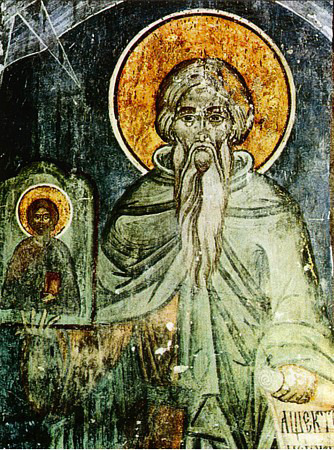
The Monk Theophanes the Confessor was born at Constantinople into a pious and reknown family. the father of Theophanes was a kinsman of the Byzantine emperor Leo the Isaurian (717-741). Three years after Theophanes was born, his father died, leaving his family under the care of the emperor himself. Theophanes grew up at the court and became a dignitary under the emperor Leo the Khozar (775-780). His position obliged him to enter into marriage. With the consent of his bride, Theophanes preserved his chastity, since in his soul matured the desire to assume the monastic form. Visiting upon a time with his spouse at monasteries in the Sygreian district (Asia Minor), Theophanes met the perspicacious elder Gregory Stratitios, who predicted to Theophanes' wife, that her husband would merit the crown of martyrdom. Awhile later the spouse of Theophanes was tonsured a nun in one of the monasteries in Bithynia, and Theophanes accepted monastic tonsure under the monastic elder Gregory. With the blessing of the elder, Theophanes built a monastery on the Island of Kalon in the Sea of Marmara and secluded himself in his cell, being occupied with the transcription of books. And in this occupation Theophanes attained an high degree of mastery. Later on the Monk Theophanes founded yet another monastery in the Sygreian district, at a place called the "Big Settlement", and became its hegumen. The monk himself took part in all the monastic tasks and for everyone he gave example by his love for work and effort. He was granted by the Lord the gift of wonderworking: he healed the sick and cast out devils. In the year 787 at Nicea was convened the Seventh Oecumenical Council, which condemned the heresy of the Iconoclasts. The Monk Theophanes was also invited to the Council. He arrived dressed in his patch-tattered attire, but he shone forth by his God-inspired wisdom in affirming the dogmas of the true Orthodoxy. At age 50 the Monk Theophanes fell grievously ill and right up to his very end he suffered terribly. Situated on his sick-bed, the monk toiled incessantly: he wrote his work, "The Chronographia", – an history of the Christian Church covering the years 285-813. This work even up into the present has remained an invaluable source in the history of the Church. During the reign of the emperor Leo the Armenian (813-820), when the saint was already well up into age, the Iconoclast heresy made a comeback. They demanded of Saint Theophanes that he accept the heresy, but he firmly refused and was locked up in prison. His "Big Settlement" monastery was put to the torch. In prison for 23 days, the holy confessor died (+ 818). After the death of the impious emperor Leo the Armenian, the "Big Settlement" monastery was restored and the relics of the holy confessor were transferred there.
© 1996-2001 by translator Fr. S. Janos.
The Monk Simeon the New Theologian (1022)
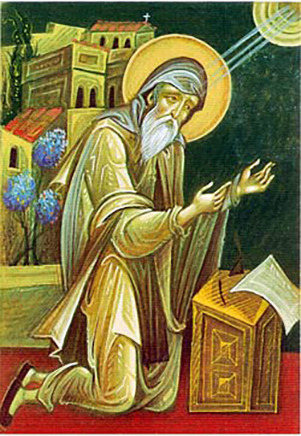
The Monk Simeon the New Theologian was born in the year 946 in the city of Galata (Paphlagonia), and he received the basic secular education at Constantinople. His father prepared him for a career at court, and for a certain while the youth occupied an high position at the imperial court. But at age 25 he felt the draw towards monastic life, and he fled his house and withdrew to the Studite monastery, where he entered into obedience under the then reknown elder Simeon the Reverent. The basic ascetic deed of the monk was the unceasing Jesus Prayer in its short form: "Lord, have mercy!" For greater prayerful concentration he constantly sought out solitude, and even at liturgy he stood separately from the brethren, and he often remained alone at night in the church; in order to accustom himself to mindfulness concerning death, he would spend nights in the graveyard. The fruit of his fervour was a special condition of ecstasy: in these moments the Holy Spirit in the form of a luminous cloud descended upon him and made oblivious to his sight everything surrounding. With time he attained to a constant high spiritual enlightened awareness, which was especially evident when he served the Liturgy.
In roughly the year 980 the Monk Simeon was made hegumen of the monastery of Saint Mamant and continued in this dignity for 25 years. He set in order the neglected management of the monastery and restored order to its church. The Monk Simeon combined kindliness with strictness and steadfast observance of the Gospel commands. Thus, for example, when his favourite disciple Arsenios killed ravens which were pecking away at moist bread, the hegumen made him tie the dead birds to a rope, and wear this "necklace" on his neck and stand in the courtyard. In the monastery of Saint Mamant for the atoning of his sin was a certain bishop from Rome, unrepentingly having murdered his young nephew, and the Monk Simeon assiduously brought him around to good and spiritual attentiveness. The strict monastic discipline, which the Monk Simeon constantly strove for, led to a strong dissatisfaction amongst the monastic brethren. One time after liturgy, the particularly irked among the brethren pounced on him and nearly killed him. When the Constantinople patriarch expelled them from the monastery and wanted to hand them over to the city authorities, the monk obtained pardon for them and aided them to live in the world. In about the year 1005, the Monk Simeon handed over the hegumen position to Arsenios, while he himself settled nearby the monastery in peace. He composed there his theological works, fragments of which entered into the 5 volumed "Philokalia" ("Dobrotoliubie"). The chief theme of his works – is the hidden activity of a spiritual perfecting, with struggle against the passions and sinful thoughts. He wrote discursive instructions for monks, – "Practical Theological Chapters", "A Tract on Three Forms of Prayers", and "A Tract on Faith". Moreover, the Monk Simeon was an outstanding churchly poet. To him belong the "Hymns of Divine Love" – about 70 poems, filled with profound prayerful ponderings. The teachings of the Monk Simeon about the new man, about the "divinisation of the flesh", with which he wanted to replace the teachings concerning the "mortification of the flesh" (for which also they termed him the New Theologian), – were difficult for his contemporaries to assimilate. Many of his teachings sounded for them unacceptable and strange. This led to conflict with Constantinople church authorities, and the Monk Simeon was subjected to banishment. He withdrew to the coasts of the Bosphorus and founded there a monastery of Saint Marina. The saint reposed peacefully to God in the year 1021. While still during his life he received a gift of wonderworking. Numerous miracles occurred also after his death; one of them – was a miraculous discovery of his image. His Life (Vita) was written by his cell-attendant and disciple, the Monk Nikita Stethatos.
© 1996-2001 by translator Fr. S. Janos.
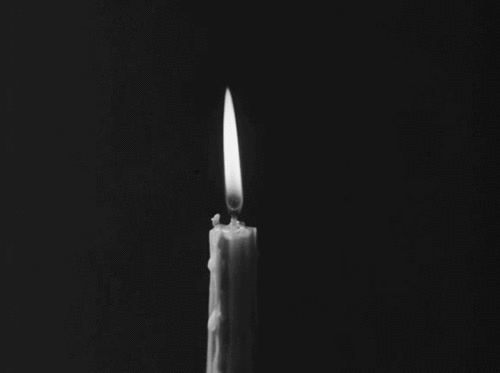
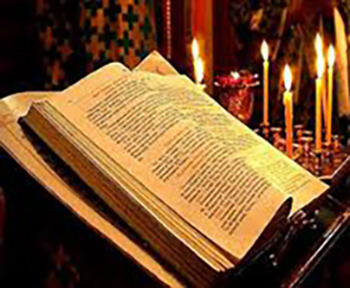
Isaiah 6:1-12
1 In the year that King Uzziah died, I saw the Lord sitting on a throne, high and lifted up, and the train of His robe filled the temple.
2 Above it stood seraphim; each one had six wings: with two he covered his face, with two he covered his feet, and with two he flew.
3 And one cried to another and said: “Holy, holy, holy is the Lord of hosts; The whole earth is full of His glory!”
4 And the posts of the door were shaken by the voice of him who cried out, and the house was filled with smoke.
5 So I said: “Woe is me, for I am undone! Because I am a man of unclean lips, And I dwell in the midst of a people of unclean lips; For my eyes have seen the King, The Lord of hosts.”
6 Then one of the seraphim flew to me, having in his hand a live coal which he had taken with the tongs from the altar.
7 And he touched my mouth with it, and said: “Behold, this has touched your lips; Your iniquity is taken away, And your sin purged.”
8 Also I heard the voice of the Lord, saying: “Whom shall I send, And who will go for Us?” Then I said, “Here am I! Send me.”
9 And He said, “Go, and tell this people: ‘Keep on hearing, but do not understand; Keep on seeing, but do not perceive.���
10 “Make the heart of this people dull, And their ears heavy, And shut their eyes; Lest they see with their eyes, And hear with their ears, And understand with their heart, And return and be healed.”
11 Then I said, “Lord, how long?” And He answered: “Until the cities are laid waste and without inhabitant, The houses are without a man, The land is utterly desolate,
12 The Lord has removed men far away, And the forsaken places are many in the midst of the land.
Proverbs 6:3-20
3 So do this, my son, and deliver yourself; For you have come into the hand of your friend: Go and humble yourself; Plead with your friend.
4 Give no sleep to your eyes, Nor slumber to your eyelids.
5Deliver yourself like a gazelle from the hand of the hunter, And like a bird from the hand of the fowler.
6Go to the ant, you sluggard! Consider her ways and be wise,
7 Which, having no captain, Overseer or ruler,
8 Provides her supplies in the summer, And gathers her food in the harvest.
9 How long will you slumber, O sluggard? When will you rise from your sleep?
10 A little sleep, a little slumber, A little folding of the hands to sleep—
11 So shall your poverty come on you like a prowler, And your need like an armed man.
12 A worthless person, a wicked man, Walks with a perverse mouth;
13 He winks with his eyes, He shuffles his feet, He points with his fingers;
14 Perversity is in his heart, He devises evil continually, He sows discord.
15 Therefore his calamity shall come suddenly; Suddenly he shall be broken without remedy.
16 These six things the Lord hates, Yes, seven are an abomination to Him:
17 A proud look, A lying tongue,
18 A heart that devises wicked plans, Feet that are swift in running to evil,
19 A false witness who speaks lies, And one who sows discord among brethren.
20 My son, keep your father’s command, And do not forsake the law of your mother.
#ortohdoxy#orthodoxchristianity#ancientchristianity#originofchristianity#ancientestament#sacred texts#wisdom
3 notes
·
View notes
Text
Saints&Reading: Sun, June, 27, 2021
June 27(old cal.)/June 14 (new cal.)
Prophet Elisha ( 10th c. B.C.)
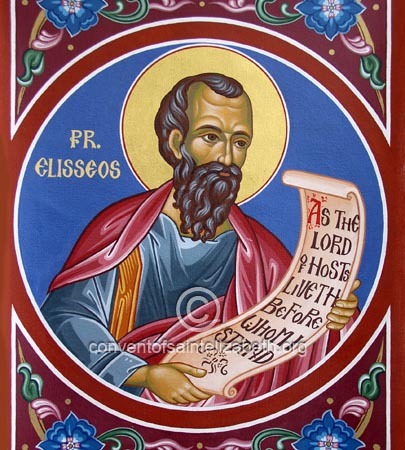
The Holy Prophet Elisha lived in the ninth century before the Birth of Christ, and was a native of the village of Abelmaum, near Jordan. By the command of the Lord he was called to prophetic service by the holy Prophet Elias (July 20).
When it became time for the Prophet Elias to be taken up to Heaven, he said to Elisha, “Ask what shall I do for you, before I am taken from you.” Elisha boldly asked for a double portion of the grace of God: “Let there be a double portion of your spirit upon me.” The Prophet Elias said, “You have asked a hard thing; if you see me when I am taken from you, then so shall it be for you; but if you do not see me, it will not be so” (4 [2] Kings 2: 10). As they went along the way talking, there appeared a fiery chariot and horses and separated them both. Elisha cried out, “My father, my father, the chariot of Israel and its horsemen!” (4 Kings 2: 12). Picking up the mantle of his teacher which fell from the sky, Elisha received the power and prophetic gift of Elias. He spent more than 65 years in prophetic service, under six Israelite kings (from Ahab to Joash). While Elisha lived, he did not tremble before any prince, and no word could overcome him (Sirach 48: 13 [“Sirach” is called “Ecclesiasticus” in Catholic Bibles ]).
The holy prophet worked numerous miracles. He divided the waters of the Jordan, having struck it with the mantle of the Prophet Elias; he made the waters of a Jericho spring fit for drinking; he saved the armies of the kings of Israel and Judah that stood in an arid wilderness by bringing forth abundant water by his prayer; he delivered a poor widow from death by starvation through a miraculous increase of oil in a vessel. This Shunamite woman showing hospitality to the prophet was gladdened by the birth of a son through his prayer, and when the child died, he was raised back to life by the prophet. The Syrian military-commander Namaan was healed from leprosy but the prophet’s servant Gehazi was afflicted since he disobeyed the prophet and took money from Namaan.
Elisha predicted to the Israelite king Joash the victory over his enemies, and by the power of his prayer he worked many other miracles (4 Kings 3-13). The holy Prophet Elisha died in old age at Samaria. “In his life he worked miracles, and at death his works were marvellous” (Sir. 48: 15). A year after his death, a corpse was thrown into the prophet’s grave. As soon as the dead man touched Elisha’s bones, he came to life and stood up (4 Kings 13: 20-21). The Prophet Elisha and his teacher, the Prophet Elias, left no books behind them, since their prophetic preaching was oral. Jesus, son of Sirach, praised both great prophets (Sir. 48:1-15).
John of Damascus composed a canon in honor of the Prophet Elisha, and at Constantinople a church was built in his honor.
Julian the Apostate (361-363) gave orders to burn the relics of the Prophet Elisha, Abdia (Obadiah) and John the Forerunner, but the holy relics were preserved by believers, and part of them were transferred to Alexandria.
In the twentieth century, the humble priest Nicholas Planas had a great veneration for the Prophet Elisha, and was accounted worthy to see him in visions.
SAINT METHODIUS, PATRIARCH OF CONSTANTINOPLE (847)

Saint Methodius, Patriarch of Constantinople, was born in Sicily into a rich family. Having a vocation to God, he went while still in his youth off to a monastery on the island of Chios and renovated it with his means. During the reign of the iconoclast Leo the Armenian (813-820), Saint Methodius held the high position of "apokrisiarus" ("advocate for Church matters") under the holy Patriarch Nicephoros (Comm. 2 June). He was dispatched by the patriarch to Rome on a mission to the papacy and he remained there. During this period Leo the Armenian removed Nicephoros from the patriarchal throne and put on it the iconoclast Theodotos of Melissinea, given the nickname "Kassiter" ("Tinman") (815-822). After the death of Leo the Armenian, Saint Methodios returned, and in the dignity of presbyter he struggled incessantly against the Iconoclast heresy. The emperor Michael the Stammerer (820-829) at first was noted for his benevolence and he set free many imprisoned by his predecessor for their veneration of icons, but after a while he renewed the persecution against Orthodoxy. Saint Methodios was locked up in prison in Akrita. After the death of Michael the Stammerer, the ruler was Theophilos (829-842), who also was an iconoclast. More refined a man than his father, he set free Saint Methodios, who likewise was a man of learning, superbly skilled in matters not only ecclesial, but also civil. Having received his freedom, Saint Methodios renewed the struggle with the heretics, and for a while the emperor tolerated this. But after defeat in a war with the Arabs, Theophilos vented his anger against Saint Methodios, saying, that God had punished him because he had let come close to him an "icon-worshipper" (such was what the iconoclasts called those who venerate holy icons). Saint Methodios objected, saying that the Lord was angry with him for the insults upon His holy icons. They gave the saint over to tortures, and struck him much about the face, from which his jaw was broken. On his face remained ugly scars. Saint Methodios was sent off to the island of Antigonos and he was locked up there with two robbers in a deep cave. In this dark prison where the light of day penetrated not, Saint Methodios languished for 7 years until the death of the emperor Theophilos. During this time, the holy Icon-Confessors Theodore and Theophanes the Lettered‑Upon (Comm. 27 December), likewise banished to prison, sent Saint Methodios greetings in verse, and the prisoner likewise answered with greetings in verse. After the death of Theophilos, his son Michael III (842-867) began to rule, but not being of mature age, the Byzantine empire was actually ruled by his mother, the empress Blessed Theodora, a venerator of icons. The empress tired to extirpate the Iconoclast heresy, and gave orders to free the confessors imprisoned for icon veneration. The heretic Annios occupying the patriarchal throne was banished, and Saint Methodios chosen in his place. At Constantinople was convened a Local Council with Saint Methodios presiding (842). The Council restored icon veneration and established an annual celebration of the triumph of Orthodoxy. The "Rite of Orthodoxy" compiled by Saint Methodios is done on the First Sunday of the Great Lent. Attempting to undermine the authority of Saint Methodios, and also the love and esteem of his flock for him, the heretics slandered him as having transgressed chastity. The slandering was exposed as such, and the enemies of the saint put to shame. The final years of the saint passed peacefully, he toiled much, wisely guided the Church and his flock, renovated temples ruined by the heretics, gathered up the relics of saints scattered about by the heretics, and transferred the relics of Patriarch Nicephoros from the place of his imprisonment back to Constantinople. Saint Methodios died in the year 846. He was spiritually close to the Monk Ioannikos (Comm. 4 November), who had foretold him his becoming patriarch and also the time of his end. Besides the "Rite of Orthodoxy", the holy hierarch also compiled a rule for those converted to the faith, three rites of marriage and several pastoral sermons and church songs.
© 1996-2001 by translator Fr. S. Janos.

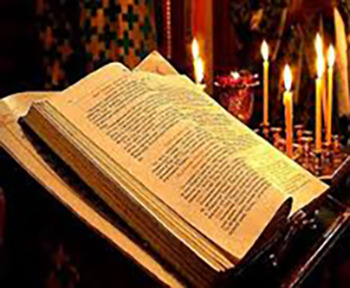
MATTHEW 28:16-20
16Then the eleven disciples went away into Galilee, to the mountain which Jesus had appointed for them.17 When they saw Him, they worshiped Him; but some doubted.18 And Jesus came and spoke to them, saying, "All authority has been given to Me in heaven and on earth.19 Go therefore and make disciples of all the nations, baptizing them in the name of the Father and of the Son and of the Holy Spirit, 20 teaching them to observe all things that I have commanded you; and lo, I am with you always, even to the end of the age. Amen.
HEBREWS 11:33-12:2
33 who through faith subdued kingdoms, worked righteousness, obtained promises, stopped the mouths of lions, 34 quenched the violence of fire, escaped the edge of the sword, out of weakness were made strong, became valiant in battle, turned to flight the armies of the aliens.35 Women received their dead raised to life again. Others were tortured, not accepting deliverance, that they might obtain a better resurrection.36\ Still others had trial of mockings and scourgings, yes, and of chains and imprisonment.37 They were stoned, they were sawn in two, were tempted, were slain with the sword. They wandered about in sheepskins and goatskins, being destitute, afflicted, tormented- 38 of whom the world was not worthy. They wandered in deserts and mountains, in dens and caves of the earth. 39 And all these, having obtained a good testimony through faith, did not receive the promise, 40 God having provided something better for us, that they should not be made perfect apart from us.
1 Therefore we also, since we are surrounded by so great a cloud of witnesses, let us lay aside every weight, and the sin which so easily ensnares us, and let us run with endurance the race that is set before us,2 looking unto Jesus, the author and finisher of our faith, who for the joy that was set before Him endured the cross, despising the shame, and has sat down at the right hand of the throne of God.
1 note
·
View note
Photo
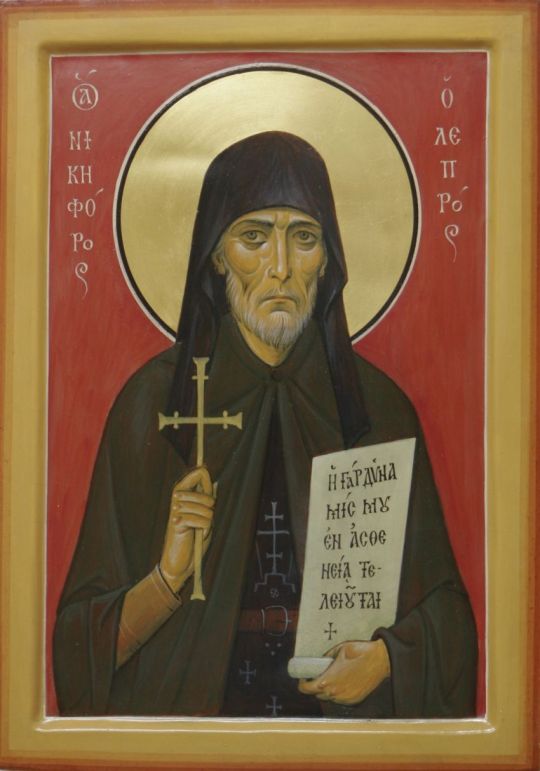
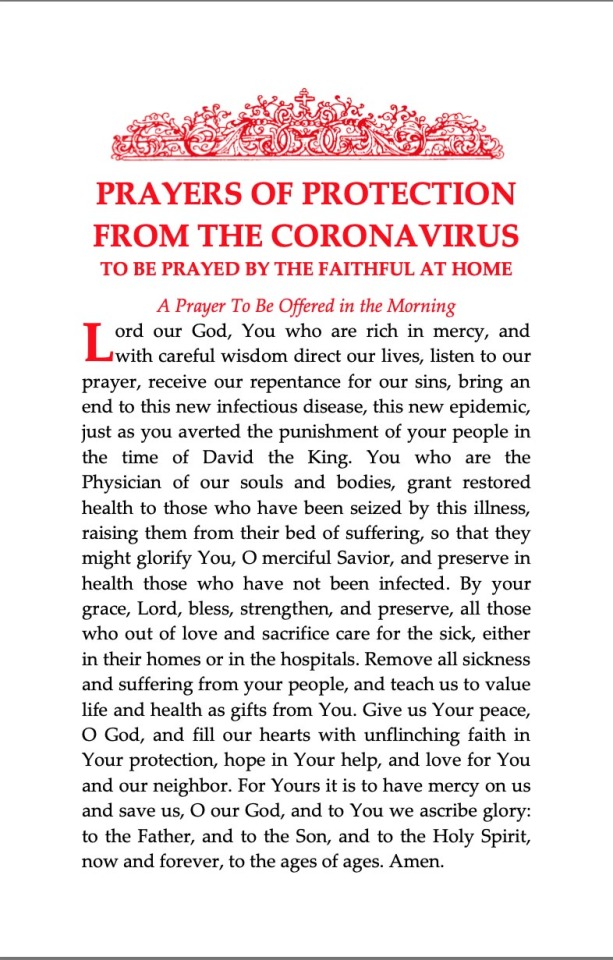
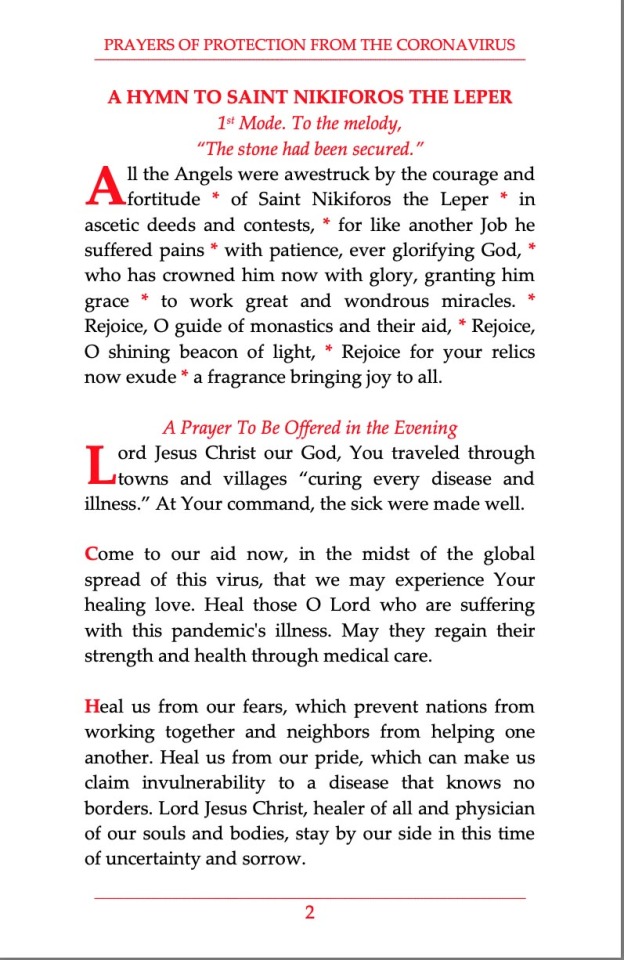

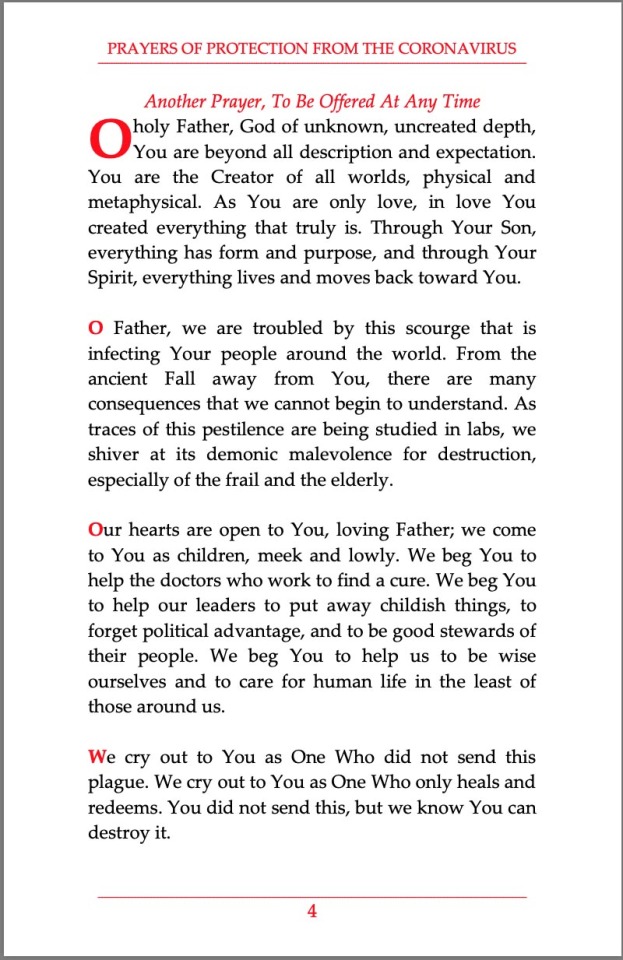
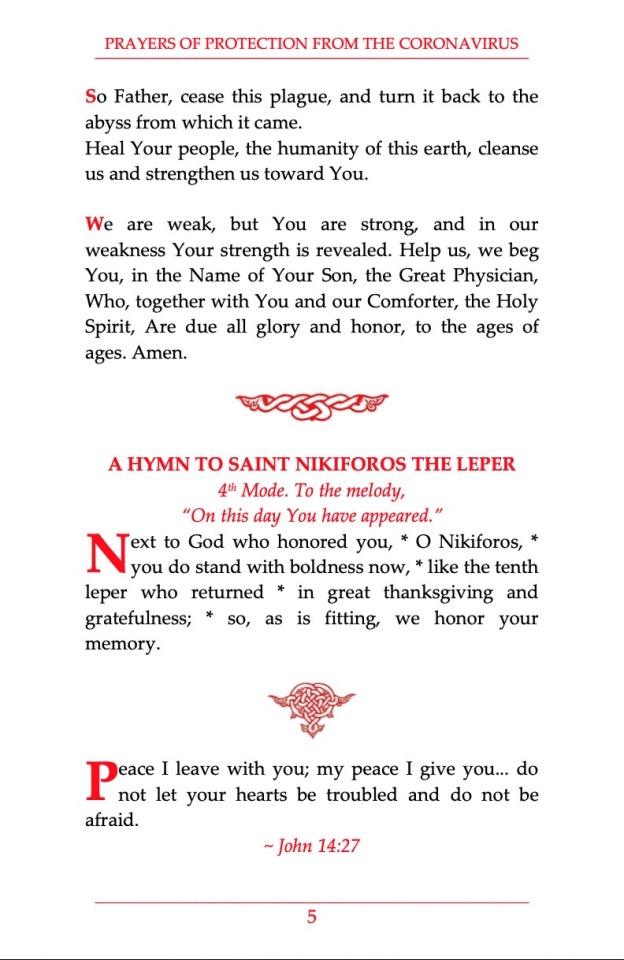
More Prayers...
#religions orthodoxy#firstchristian#spirituality#prayer#epidemic#healing#ortohdoxy spirituality ancientchristianity firstchristian mysticalchristianity faithbible
14 notes
·
View notes
Text
Saints&Reading: Mon., Feb. 17, 2020
Greatmartyr Theodore

The Holy Great Martyr Theodore the Recruit (Tyro) was a soldier in the city of Alasium of the Pontine district (northeast province of Asia Minor, stretching along the coast of the Euxine, i.e. the Black Sea), under the command of a certain Brincus. They commanded him to offer sacrifice to idols. Saint Theodore firmly confessed his faith in Christ the Savior in a loud voice. The commander gave him several days to think it over, during which time Saint Theodore prayed.
They charged him with setting a pagan temple on fire, and threw him into prison to be starved to death. The Lord Jesus Christ appeared to him there, comforting and encouraging him. Brought to the governor, Saint Theodore boldly and fearlessly confessed his faith, for which he was subjected to new torments and condemned to burning. The martyr Theodore climbed onto the fire without hesitation, and with prayer gave up his holy soul to God.
This occurred in about the year 306 under the Roman emperor Galerius (305-311). Unharmed by the fire, the body of Saint Theodore was buried in the city of Euchaita, not far from Amasium. His relics were afterwards transferred to Constantinople, to a church dedicated to him. His head is in Italy, in the city of Gaeto...keep reading
Hieromartyr Ghermogen Patriarch of Moscow

The Hieromartyr Hermogenes, Patriarch of Moscow and all Rus, was born in Kazan around 1530, and was descended from the Don Cossacks. According to the Patriarch’s own testimony, he served as priest in Kazan in a church dedicated to Saint Nicholas (December 6 and May 9), near the Kazan bazaar. Soon he became a monk, and from 1582 was archimandrite of the Savior-Transfiguration monastery at Kazan. On May 13, 1589 he was consecrated bishop and became the first Metropolitan of Kazan.
While he was the priest at Saint Nicholas, the wonderworking Kazan Icon of the Mother of God (July 8) was discovered in Kazan in 1579. With the blessing of Archbishop Jeremiah of Kazan, he carried the newly-appeared icon from the place of its discovery to the Church of Saint Nicholas. Having remarkable literary talent, the saint in 1594 compiled an account describing the appearance of the wonderworking icon and the miracles accomplished through it. In 1591 the saint gathered newly-baptized Tatars into the cathedral church and for several days he instructed them in the Faith.
The relics of Saint Germanus, the second archbishop of Kazan (September 25, November 6, and June 23), who died at Moscow on November 6, 1567 during a plague, were transfered and buried in Saint Nicholas Church in 1592. With the blessing of Patriarch Job (1589-1605), Saint Hermogenes reburied the relics at the Sviyazhsk Dormition monastery.
On January 9, 1592 Saint Hermogenes addressed a letter to Patriarch Job, in which he asked for permission to commemorate in his See of Kazan those Orthodox soldiers who gave their lives for the Faith and the nation in a battle against the Tatars. In the past, it was customary to enter into the diptychs the names of all Orthodox warriors who had fallen in battle, and to commemorate them...Keep reading Orthodox Church of America OCA
1 John 2:18- 3:10 NKJV
Deceptions of the Last Hour
18 Little children, it is the last hour; and as you have heard that the[a] Antichrist is coming, even now many antichrists have come, by which we know that it is the last hour. 19 They went out from us, but they were not of us; for if they had been of us, they would have continued with us; but they went out that they might be made manifest, that none of them were of us.
20 But you have an anointing from the Holy One, and you[b] know all things. 21 I have not written to you because you do not know the truth, but because you know it, and that no lie is of the truth.
22 Who is a liar but he who denies that Jesus is the Christ? He is antichrist who denies the Father and the Son. 23 Whoever denies the Son does not have the Father either; he who acknowledges the Son has the Father also.
Let Truth Abide in You
24 Therefore let that abide in you which you heard from the beginning. If what you heard from the beginning abides in you, you also will abide in the Son and in the Father. 25 And this is the promise that He has promised us—eternal life.
26 These things I have written to you concerning those who try to [c]deceive you. 27 But the anointing which you have received from Him abides in you, and you do not need that anyone teach you; but as the same anointing teaches you concerning all things, and is true, and is not a lie, and just as it has taught you, you [d]will abide in Him.
The Children of God
28 And now, little children, abide in Him, that [e]when He appears, we may have confidence and not be ashamed before Him at His coming. 29 If you know that He is righteous, you know that everyone who practices righteousness is born of Him.
The Command to Love
3 Behold what manner of love the Father has bestowed on us, that we should be called children of [f]God! Therefore the world does not know [g]us, because it did not know Him. 2 Beloved, now we are children of God; and it has not yet been revealed what we shall be, but we know that when He is revealed, we shall be like Him, for we shall see Him as He is. 3 And everyone who has this hope in Him purifies himself, just as He is pure.
Sin and the Child of God
4 Whoever commits sin also commits lawlessness, and sin is lawlessness. 5 And you know that He was manifested to take away our sins, and in Him there is no sin. 6 Whoever abides in Him does not sin. Whoever sins has neither seen Him nor known Him.
7 Little children, let no one deceive you. He who practices righteousness is righteous, just as He is righteous. 8 He who sins is of the devil, for the devil has sinned from the beginning. For this purpose the Son of God was manifested, that He might destroy the works of the devil. 9 Whoever has been born of God does not sin, for His seed remains in him; and he cannot sin, because he has been born of God.
The Imperative of Love
10 In this the children of God and the children of the devil are manifest: Whoever does not practice righteousness is not of God, nor is he who does not love his brother.
Footnotes:
1 John 2:18 NU omits the
1 John 2:20 NU you all know.
1 John 2:26 lead you astray
1 John 2:27 NU omits will
1 John 2:28 NU if
1 John 3:1 NU adds And we are.
1 John 3:1 M you
Mark 11: 1-11 NKJV
The Triumphal Entry
11 Now when they drew near Jerusalem, to [a]Bethphage and Bethany, at the Mount of Olives, He sent two of His disciples; 2 and He said to them, “Go into the village opposite you; and as soon as you have entered it you will find a colt tied, on which no one has sat. Loose it and bring it. 3 And if anyone says to you, ‘Why are you doing this?’ say, ‘The Lord has need of it,’ and immediately he will send it here.”
4 So they went their way, and found [b]the colt tied by the door outside on the street, and they loosed it. 5 But some of those who stood there said to them, “What are you doing, loosing the colt?”
6 And they spoke to them just as Jesus had commanded. So they let them go. 7 Then they brought the colt to Jesus and threw their clothes on it, and He sat on it. 8 And many spread their clothes on the road, and others cut down leafy branches from the trees and spread themon the road. 9 Then those who went before and those who followed cried out, saying:
“Hosanna! ‘Blessed is He who comes in the name of the Lord!’ 10 Blessed is the kingdom of our father David That comes [c]in the name of the Lord! Hosanna in the highest!”
11 And Jesus went into Jerusalem and into the temple. So when He had looked around at all things, as the hour was already late, He went out to Bethany with the twelve.
Footnotes:
Mark 11:1 M Bethsphage
Mark 11:4 NU, M a
Mark 11:10 NU omits in the name of the Lord
New King James Version (NKJV) Scripture taken from the New King James Version®. Copyright © 1982 by Thomas Nelson. All rights reserved. From Biblegateway.com
3 notes
·
View notes